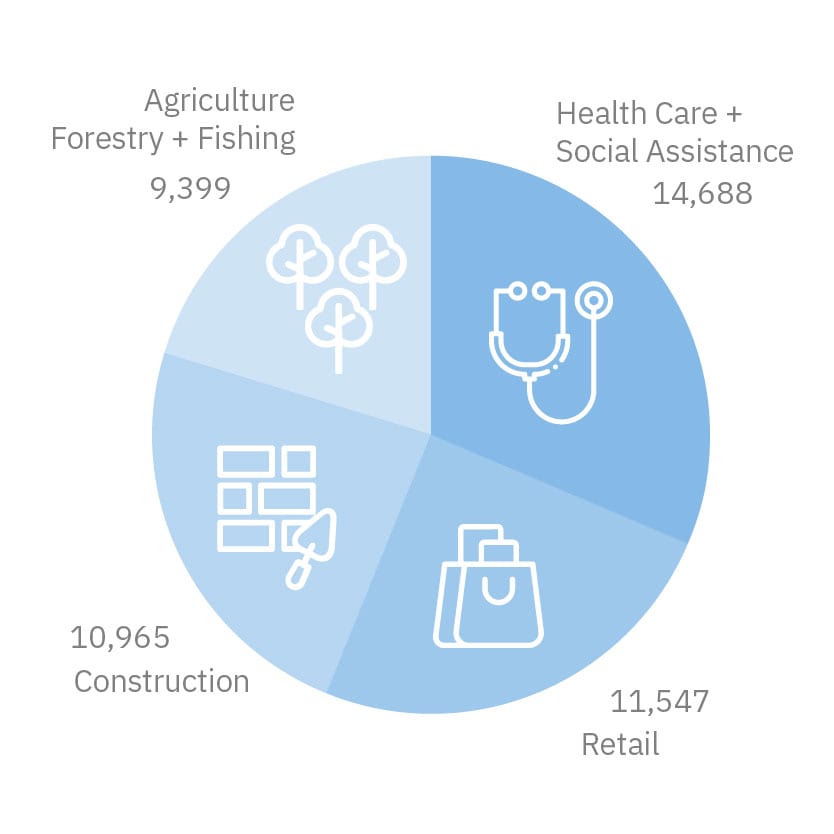An irresistible location for business and life
Stretching from outer Melbourne to the eastern most point of Victoria, Gippsland is the powerhouse of Victoria’s natural resources and commodities economy. With many of Australia’s leading businesses located in the Gippsland region, we are home to the state’s electricity industry and we are a key region for the growth of food and fibre, which contributes A$7 billion per year to the region’s total gross production of A$14.1 billion. Within the thriving agribusiness industry Gippsland excels in the dairy, horticulture and beef sectors as well as the emerging organic farming industry. Other key sectors include forestry, fishing, tourism, engineering, finance, health care and education, all providing numerous opportunities for future economic growth.
A prosperous economic outlook and stable business environment, combined with a superior lifestyle, makes Gippsland an irresistible place to live and work. Art and cultural festivals abound, and the gourmet food and wine on menus throughout the region provide a sensory feast. In Gippsland you can build and enjoy a life unlike anywhere else.
-
Affordability + Lifestyle
Gippsland is home to a number of urban centres and townships that provide new employers and residents with a variety of state of the art facilities and services, which contribute to making Gippsland a great place to live and work. Gippsland real estate offers great value for the astute investor: in 2017, the median house prices in Gippsland varied from $223,000 in Latrobe City to $395,000 in Bass Coast, compared to the Victorian State median house price of $533,124.
Gippsland’s relative proximity to Melbourne, prime agricultural land and world-class natural setting makes the region unrivalled as a space where the city meets the country. State owned forests and parks cover 67% of the land throughout Gippsland giving residents direct access to icons such as Wilsons Promontory, the Australian Alps and the Croajingolong National Park.

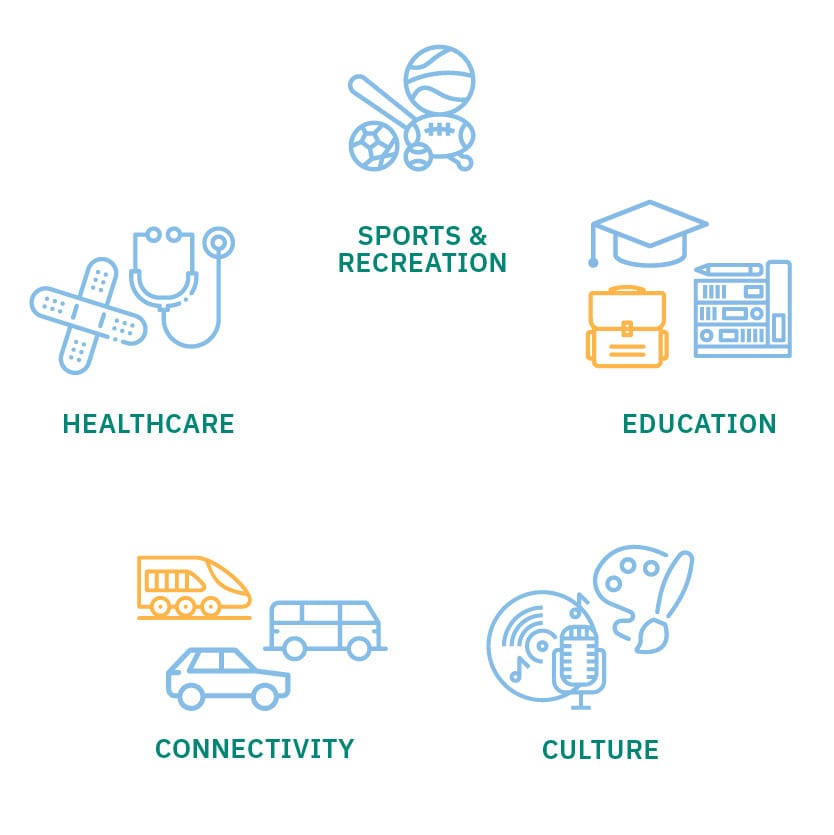
-
Cost Competitiveness
“The region is potentially the most cost competitive in Victoria and one of the most cost competitive in Australia”.*
Gippsland has a productive workforce ready to work for you. In 2018, Gippsland’s GDP per worker was $119,822. This is higher than the average GDP per worker across regional Victoria, which was $110,736.**
The Gippsland region provides considerable value in terms of a business location. Businesses operating in the region will benefit from a lower payroll tax rate than their metropolitan counterparts. By 2022-23, the regional payroll tax rate will be cut to 25% of the metropolitan rate and eligible businesses will benefit from the lowest payroll tax rate in the nation.
* KPMG report to Regional Development Victoria (May 2012)
** based on GDP per job in the region from NIEIR statistics (December 2018)
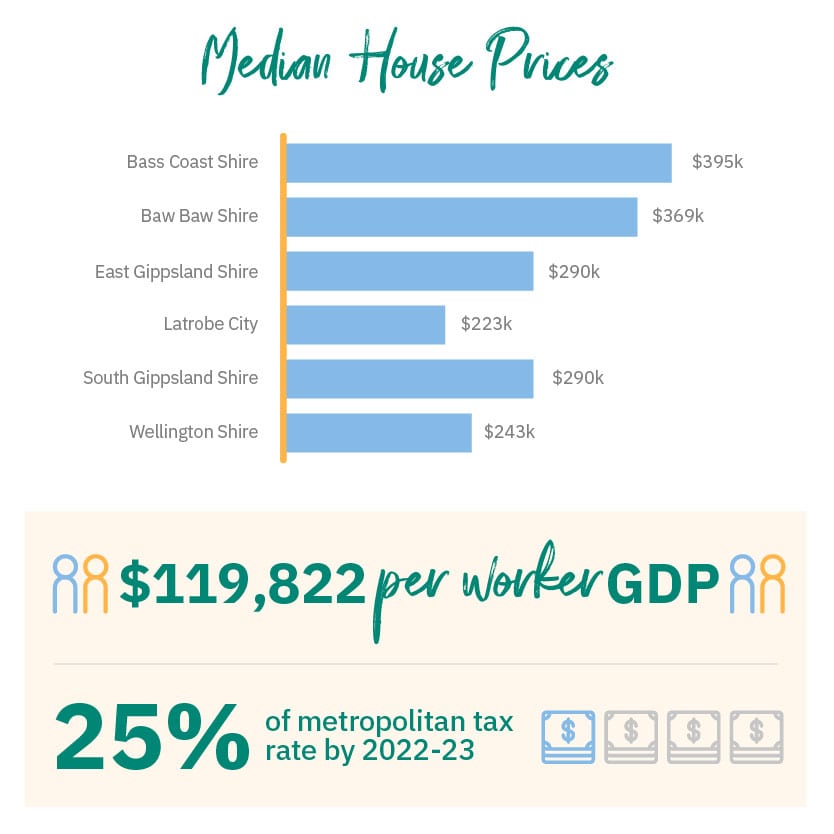
-
Pro-Business Environment
Gippsland welcomes investors and business migrants with a number of supports in place to attract and assist businesses looking to establish a presence in Gippsland. Regional Development Victoria (RDV) Gippsland has a dedicated Investment and Trade team who provide guidance and support to businesses looking to move to the region. Together with the full support and active engagement of all six local councils, RDV and Global Victoria provide free confidential services to investors and businesses. View services here.
RDV Gippsland work with key partners to strengthen the economic and social base of the region, through job creation, improved infrastructure, facilities and services. By supporting businesses to enhance their capabilities, facilitating private sector investment and assisting with increased outputs, RDV Gippsland aims to boost the regional businesses and industry sectors’ competitiveness both domestically and globally.
With access to the Victorian Government’s 22 Investment and Trade offices around the world, Invest Gippsland is well situated to assist investors and businesses globally.
Investment is taking place across Gippsland to ensure it is a great place to live, work and succeed in business. Recent investments include:
- The Victorian State Government’s Regional Car Park Fund delivering 800 additional car spaces across the Latrobe Valley
- Gippsland Line Upgrade: $530 million investment as part of the Regional Rail Revival program.
- Latrobe creative precinct: A new, $35 million precinct is under construction
- Port of Sale $14.6 million redevelopment of this cultural hub officially opened in January 2019.
- West Gippsland Arts Centre $14.1 million redevelopment, increasing seating capacity from 490 to 750. Completed in October 2018.
- Wonthaggi Hospital: $115 million to expand the hospital including the emergency department.
- Latrobe Regional Hospital: $217 million to undertake Stage three of the hospital redevelopment.
- Gippsland Regional Aquatic Centre in Traralgon: $57 million. Construction commenced March 2019, due to be completed by the end of 2020.
- Development of Bullock Island, Lakes Entrance: $1.5 million for a new on-water café in partnership with the Lakes Entrance Fisherman’s Co-operative Society.
- Gippsland Hi-Tech precinct: $17 million to develop an education and innovation hub in Latrobe City.

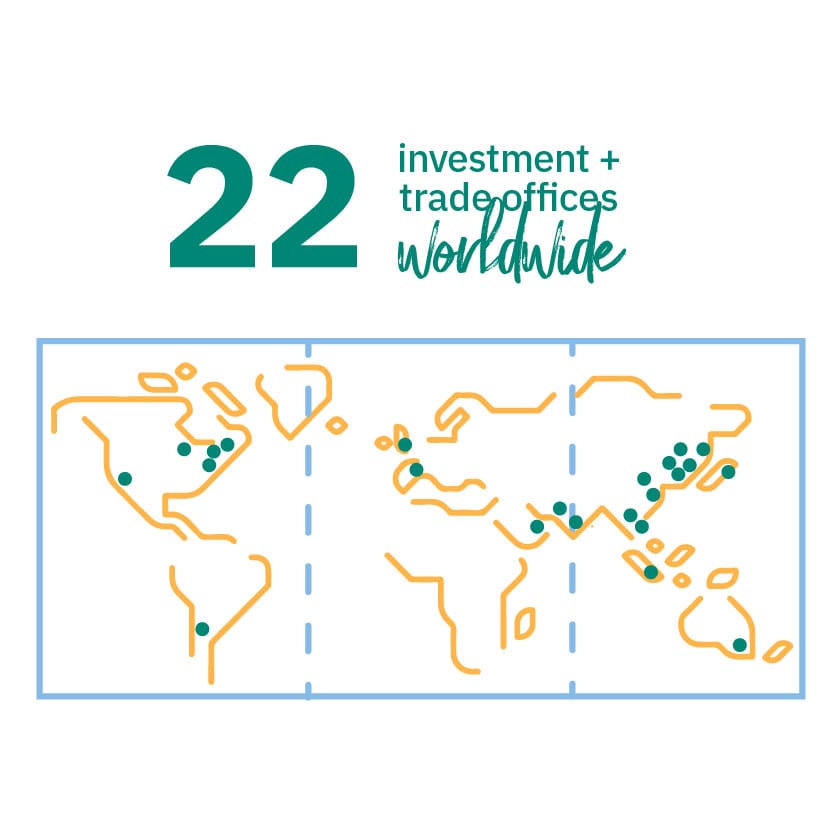
-
Economic & Population Growth
The Gippsland community has a vibrant entrepreneurial mentality and is home to over 24,000 businesses. The region’s annual Gross Regional Product (GRP) growth rate for 2017-2018 was 1.56% and the jobs growth rate for the same period was 2.83%. Agriculture and Construction are the key industry sectors driving Gippsland’s regional economy in terms of regional exports, employment, value-added and local expenditure on goods and services.
Approximately 283,000 people call the Gippsland region home and by 2031 the regional population is forecasted to increase to almost 322,000 residents. Approximately 55% of the current population are within the working age bracket of between 20 and 64 years old.
The majority of Gippsland residents live and work in the same Local Government Area, supporting local businesses and the local economy.There are a number of towns across Gippsland that have experienced particularly strong population growth, including Drouin, Cowes and Inverloch.

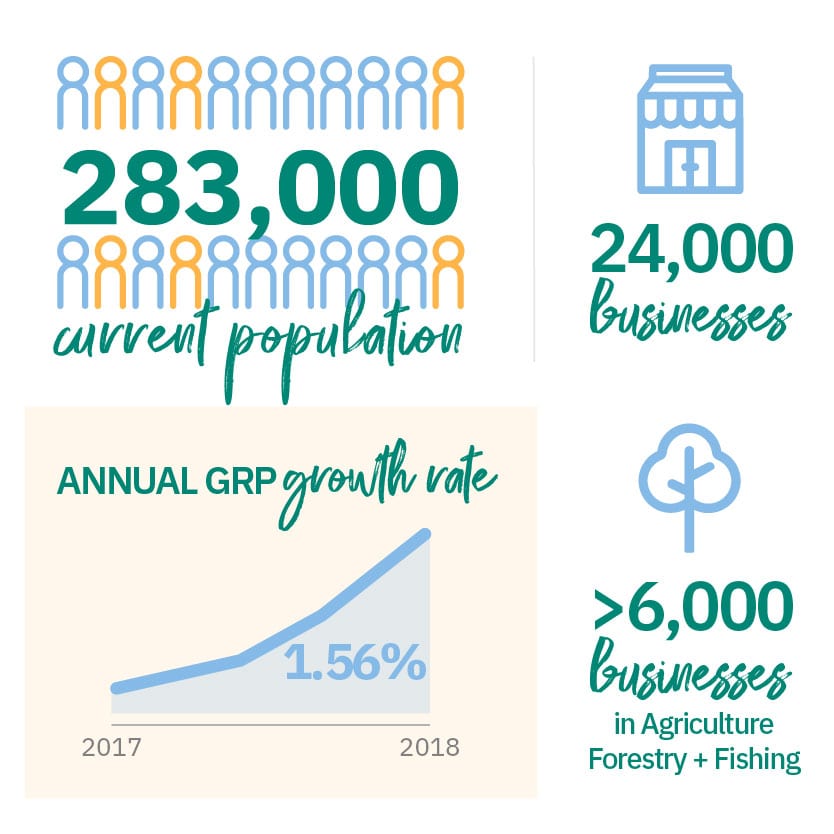
-
Industrial & Commercial Property
Industrial land and commercial premises in the Gippsland region offer substantial savings over other locations.
With 36.27% of Gippsland’s land used for primary production, the Victorian State Government continues to support the agricultural industry, by trialling new systems to support more productive use of non-urban regional land as part of the Agribusiness Development Facilitation model.
More than 7,000 building permits were issued across Gippsland in 2018. If you have questions about land use in the region, our team can provide the answers and step you through the permits process, to help you realise your business’ potential in Gippsland.


-
Reliable Infrastructures
The Gippsland region has numerous major road, rail and air infrastructure that connects us to the global economy. Located approximately 90 minutes east of the Melbourne CBD, the Gippsland region is strategically located in south eastern Australia.
Key infrastructure assets of the Gippsland region includes:
- Road Connections: Princes Freeway/Highway connecting to Melbourne and the New South Wales east coast provides exceptional freight movement capability.
- Rail transport: This includes the V/Line passenger services and freight lines that link to and beyond Melbourne. Intermodal developments in the Latrobe Valley give your business the flexibility to operate in a more cost-effective location while remaining connected to both domestic and global markets.
- Airports: Significant airport precincts (located in the Latrobe City and Sale) are opening up opportunities for aviation-related enterprises to tap into a growing need for pilot training, aviation related manufacturing and maintenance specialists. Melbourne airport is one of Australia’s busiest and most accessible airports.
- Port Access: The Port of Melbourne is Australia’s busiest container port and located within 2 hours of major centres in the Gippsland region.


-
Competitive Workforce
The Gippsland region has an available labour force of over 130,000 workers, with the majority of jobs found in the health care, retail and construction industries. These prospective employees are highly skilled and trained across a wide number of industries and sectors including energy, mining, agriculture, food production, advanced manufacturing and professional services.
This skills base is supported by the Federation University Campus with nearly 2,000 enrolled students, in addition to an extensive TAFE network with teaching facilities throughout the region and a host of other registered training organisations (RTOs) which will ensure the workforce aligns to your business needs.

